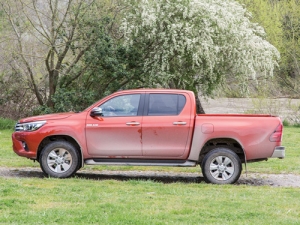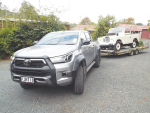The light truck market is 20% of the new car market in New Zealand, and the Toyota Hi-Lux has held top position for 27 years.
Come December 1 a range of 21 models will be launched and the prices have hit the dealerships, where there will be something for everyone -- gnarly Otago farmer to Howick housewife. There are four specification grades -- S,SR, SR5 and SR5 Limited.
The new 8th generation Hi-Lux sees 18 models powered by the new 1GD diesel engine as used in the Prado; the remaining three petrol vehicles use the 1GRFE, 4L V6 layout.
Key change to the product offering will be the 'pre-runner' option available on all 2WD drive models; it has the ground clearance and ride height of the 4WD and will suit drivers who want visibility but don't need all wheels driven. There's also a choice of automatic transmission in four 2WD models, a choice that was lacking in the previous series.
4WD will feature in twelve models and will remain the backbone of the product range; this is the source of the Hi-Lux's legendary durability, as seen on many rural and municipal user shopping lists.
A new 6-speed auto or manual box option is available for the three higher grades, and on some vehicles towing capacity is now a hefty 3500kgs, a key consideration for many buyers.
As part of the new package each new Hi-Lux has a 5-star ANCAP crash test rating thanks to such safety features as seven airbags, vehicle stability control, active traction control, anti-lock brakes and brake assist, electronic brake-force distribution and trailer sway control.
Prices range from$36,990 for the 2WD cab chassis option to $70,490 for the flagship 4WD double cab SR5 Limited.
www.toyota.co.nz











